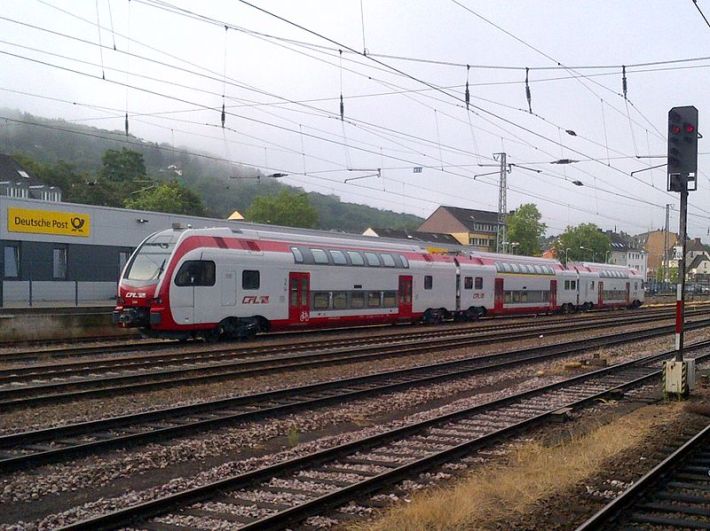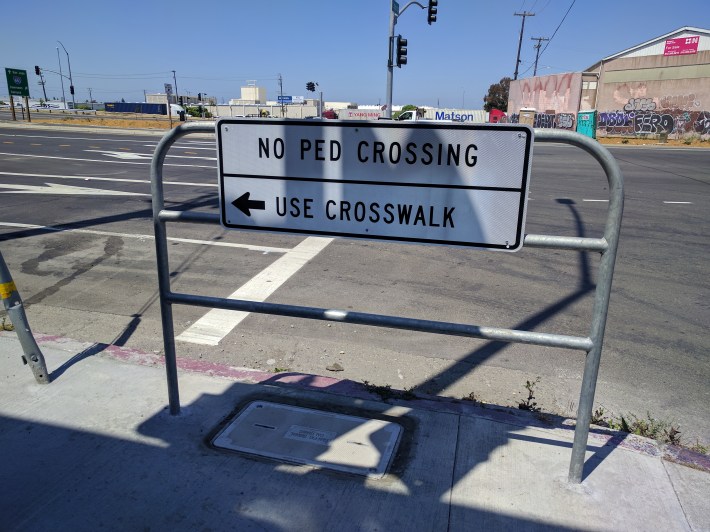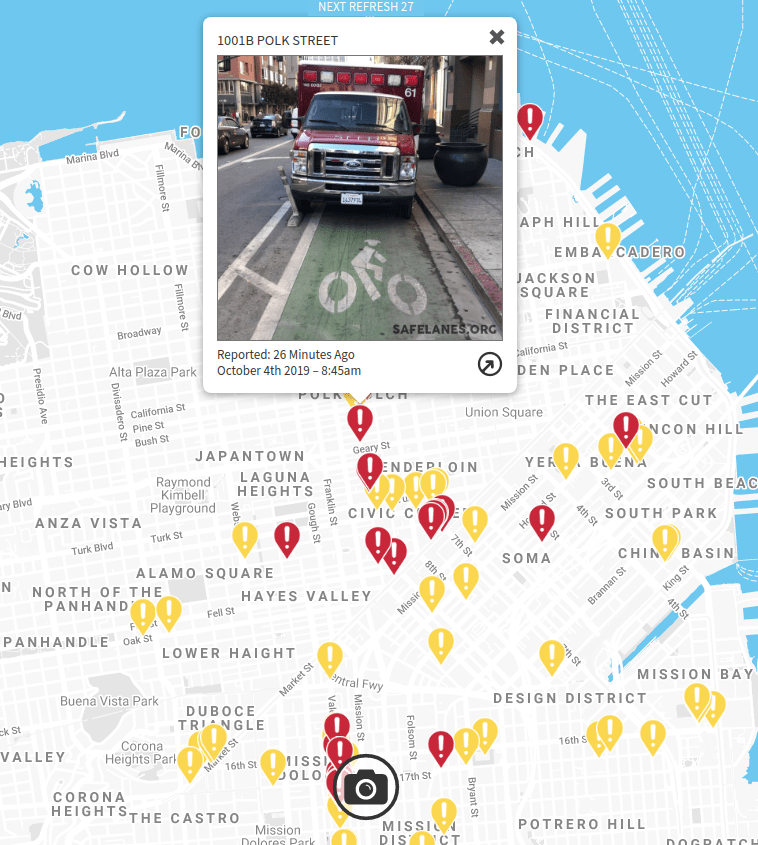A few tidbits to start off your Streetsbloggy weekend.
Blocked Bike Lane Day of Action
It would be an understatement to say that cyclists have had it with motorists blocking bike lanes, forcing people on bikes to risk life and limb diverting into traffic. Advocate Stephen Braitsch wrote the app "safe lanes" to help fed-up cyclists document, in a unified database, bike-lane violations across San Francisco and elsewhere. Today was a "day of action" to try and show public officials a snap shot of the anarchy on a typical day.
From the Safe Lanes website:
We need to show both the sheer number of violations that are happening throughout our city as well how the vast majority of them are being ignored. To do this we obviously need to capture as many violations as possible but we also need license plates which is the easiest way for us to check if the driver was eventually cited.
Streetsblog checked in with Braitsch late this morning: "So far we’ve logged 114 reports through the Safe Lanes platform (since 12:01 a.m.) and 152 in the past 24 hours.Valencia was unusually quiet this morning, go figure but I’m confident the p.m. rush hour will make up for that."
Yes, we're also confident that Valencia will be its usual clusterf*ck in the p.m. Past documentation has proven that. The question is, what will it take to get some real enforcement going, while riders push and push and push for the real solution: protected bike lanes on ever major street.
If you participated in Safe Lanes, post your thoughts in the comments section on how it went.
Caltrain Plans for BART-like Frequencies

Caltrain’s Board of Directors adopted its 2040 Service Vision plan on Thursday, which lays out its growth plan for the next two decades. The idea is to exploit electrification and signal upgrades to their fullest, and provide 15-minute headways all day long--in other words, run the railroad more like BART.
From the railroad's release:
Under the 2040 Service Vision, Caltrain service would evolve to look very different from what the railroad operates today. Caltrain currently operates five trains per hour during peak commute times, and over the last 15 years, ridership has more than doubled to nearly 65,000 daily riders. The 2040 Service Vision calls for fast and frequent service to be the standard on the line every day, all day. Service during peak hours would grow to a minimum of eight trains per direction per hour, with all day express service every 15 minutes, and increased off-peak and weekend services.
And the Complete Streets Bill is Still Sitting on Governor's Desk...

Walk San Francisco, and other groups, are making a last push, asking people to contact the governor and urge him to sign S.B. 127, the "Complete Streets For All Bill" authored by San Francisco's Senator Scott Wiener. This is a pretty straightforward bill that would push Caltrans to follow its own policies and consider cyclists and pedestrians in projects, something it pretends to do--but doesn't actually do presently (see exhibit 'A' in the above photo). If the bill remains on the governor's desk past Oct. 13, unfortunately, the veto is automatic. Correction: the bill will become law. But it's still unclear how the governor will act.
From Walk S.F.:
S.B. 127 ensure Caltrans creates safe pedestrian conditions on city roads under Caltrans’ purview – and here in San Francisco, that includes notoriously dangerous Sloat Boulevard, 19th Avenue, Van Ness Boulevard, and Lombard Street. We need this bill.
Please take just one minute to call Governor Newsom’s office at (916) 445-2841. Just say your name, where you live, and that you urge him to sign SB 127, the Complete Streets bill. We need to flood his office with these calls!
Be sure to call that number. More coverage on this bill can be found on Streetsblog California.





